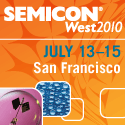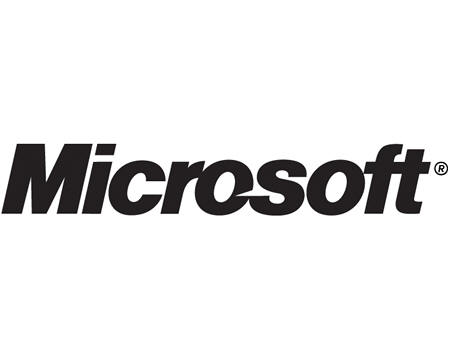 The semiconductor industry's largest event of the year, SEMICON West, is right around the corner. And with the market in recovery, we expect it to be a good turn out and a great show.
The semiconductor industry's largest event of the year, SEMICON West, is right around the corner. And with the market in recovery, we expect it to be a good turn out and a great show.
This year, Cimetrix has several exciting new developments to discuss at the show:
- GEM Implementation - Faster & Better
We've been at work developing a new solution that enables an even faster GEM implementation... while still improving the already high level of quality you've come to expect from Cimetrix. Designed to cover 90% of typical GEM interfaces, the new solution helps reduce time to market (and headaches) for our customers. - The Year for Interface A - Are you Ready?
ISMI announced the new Freeze Version of the Interface A Standards on June 17. Also, with increased SEMI investment and fabs requiring implementation, this has quickly become a hot topic. Is your software able to support multiple versions of the Interface A standard at the same time? Are you set up to adopt the new version effectively and efficiently?
We would love the opportunity to discuss your unique needs and projects with you further at the show.
Not registered for the show? Email us for a free pass.
We will be in the South Hall - Booth #2331.
See you at the show!


 Fabs are like people, each one has it own personality traits. Fortunately, and arguably unfortunately, unlike people, most fabs have a handbook for their “personalities” in the form of specifications. I have found it interesting, that like people, fab “personalities” have common and unique features. Here are a few of examples:
Fabs are like people, each one has it own personality traits. Fortunately, and arguably unfortunately, unlike people, most fabs have a handbook for their “personalities” in the form of specifications. I have found it interesting, that like people, fab “personalities” have common and unique features. Here are a few of examples: The time shift for daylight savings this week is going to cause me some grief for some time. Most countries in Europe will not adjust until March 28. Many countries in Asia (India, Singapore, Taiwan, Malaysia and Japan for example) are not adjusting for daylight savings at all in 2010. Since our customers are all over the world, I’m going to have a tough time keeping in sync. It’s inevitable that I’ll miss some important event this month. So, I thought it would be very àpropos to submit a blog about Time Synchronization.
The time shift for daylight savings this week is going to cause me some grief for some time. Most countries in Europe will not adjust until March 28. Many countries in Asia (India, Singapore, Taiwan, Malaysia and Japan for example) are not adjusting for daylight savings at all in 2010. Since our customers are all over the world, I’m going to have a tough time keeping in sync. It’s inevitable that I’ll miss some important event this month. So, I thought it would be very àpropos to submit a blog about Time Synchronization.



 by Bill Grey,
by Bill Grey, This week, SEMICON Japan 2009 will be invading the Makuhari Messe in Chiba, Japan. The largest international exhibition of semiconductor equipment and materials, vistors can expect over 1500 exhibiting companies as well as co-organized events including the SEMI Technology Symposium (STS). SEMICON Japan takes place Wednesday, December 2 - Friday, December 4.Exhibits will be open from 10:00 am to 5:00 pm.
This week, SEMICON Japan 2009 will be invading the Makuhari Messe in Chiba, Japan. The largest international exhibition of semiconductor equipment and materials, vistors can expect over 1500 exhibiting companies as well as co-organized events including the SEMI Technology Symposium (STS). SEMICON Japan takes place Wednesday, December 2 - Friday, December 4.Exhibits will be open from 10:00 am to 5:00 pm. Running a company during an industry downturn presents quite a challenge. I have always thought I would someday be the president of a company. However, during this severe semiconductor down cycle, the thought that you should “be careful what you wish for” certainly came to mind a few times. Even though Cimetrix is a small company, successfully navigating a business through a severe downturn that hit the semiconductor industry requires a combination of critical thinking, tough decisions and a durable stomach.
Running a company during an industry downturn presents quite a challenge. I have always thought I would someday be the president of a company. However, during this severe semiconductor down cycle, the thought that you should “be careful what you wish for” certainly came to mind a few times. Even though Cimetrix is a small company, successfully navigating a business through a severe downturn that hit the semiconductor industry requires a combination of critical thinking, tough decisions and a durable stomach..jpg?width=311&height=394&name=financialrecovery(1).jpg) It is starting to feel like a recovery in the semiconductor industry. Wall Street is saying to keep on eye on semiconductor stocks and even semiconductor equipment stocks. SEMI just reported that worldwide semiconductor equipment bookings for Q2 2009 were 83% greater than Q1 2009. Capacity utilization is likely to reach 88% in Q3 2009 according to IC Insights, up from 57% in Q1 2009. And the SEMI World Fab Forecast is now calling for a 64% increase in fab spending in 2010. The fear is starting to subside. Q1/Q2 2009 appear to be the low point for equipment suppliers and we appear to be heading up the hill, but starting from a very low elevation. I think we are finally in the recovery.
It is starting to feel like a recovery in the semiconductor industry. Wall Street is saying to keep on eye on semiconductor stocks and even semiconductor equipment stocks. SEMI just reported that worldwide semiconductor equipment bookings for Q2 2009 were 83% greater than Q1 2009. Capacity utilization is likely to reach 88% in Q3 2009 according to IC Insights, up from 57% in Q1 2009. And the SEMI World Fab Forecast is now calling for a 64% increase in fab spending in 2010. The fear is starting to subside. Q1/Q2 2009 appear to be the low point for equipment suppliers and we appear to be heading up the hill, but starting from a very low elevation. I think we are finally in the recovery. 
